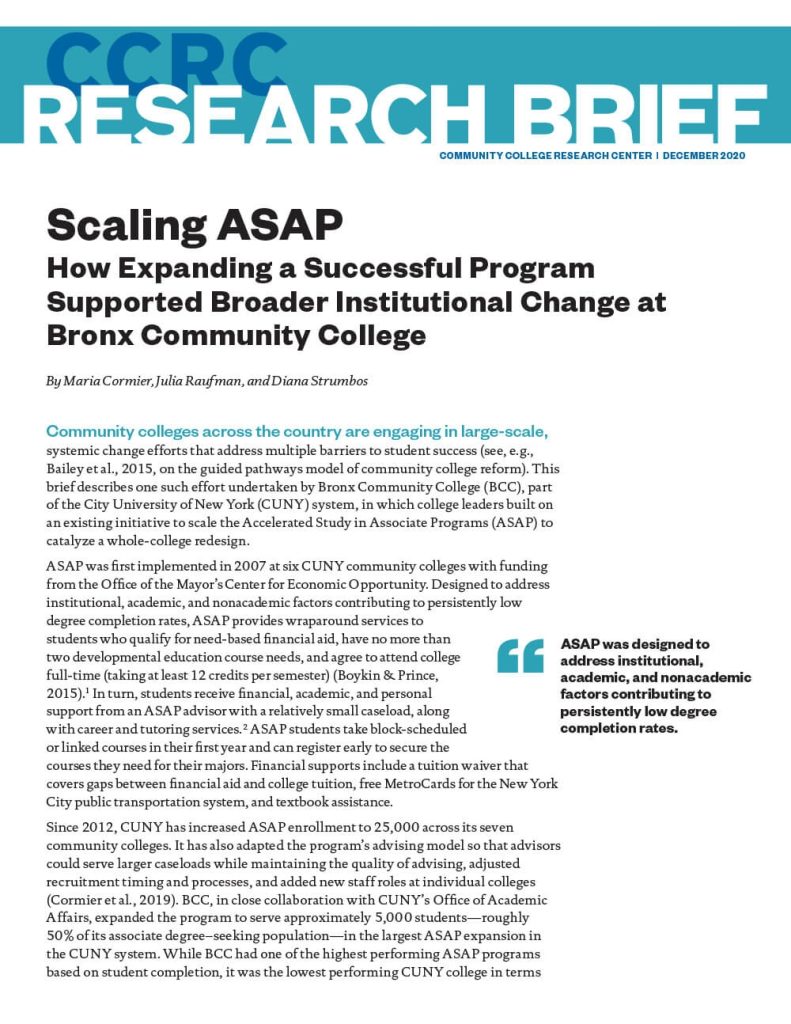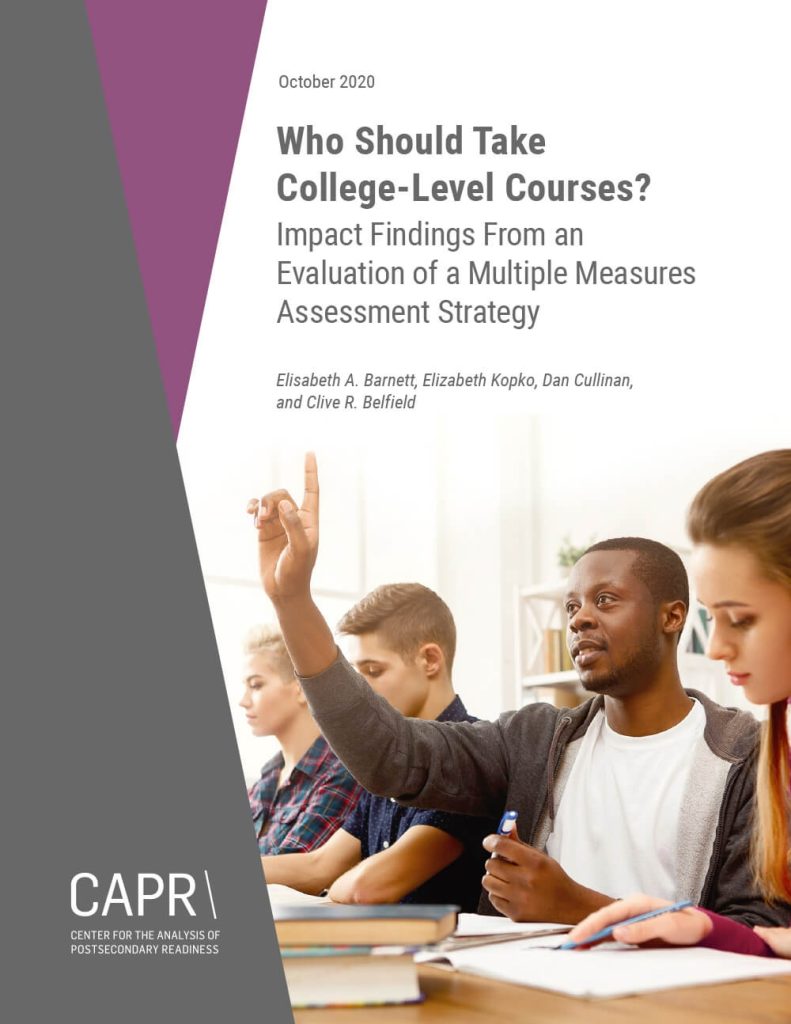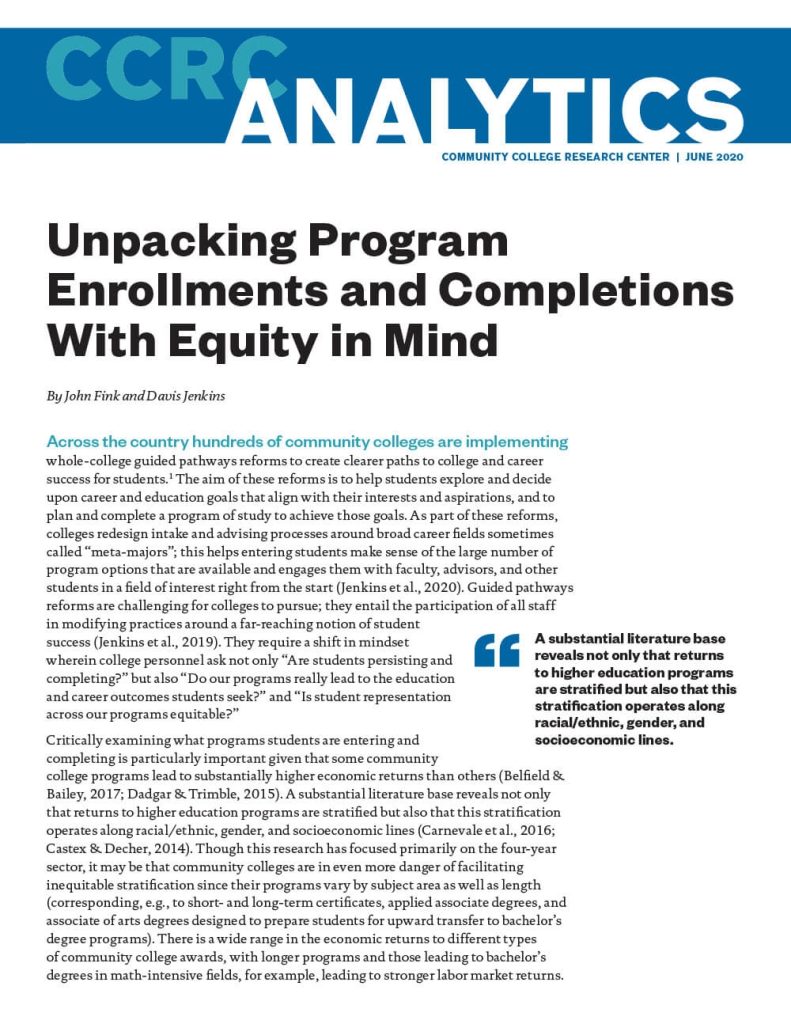Scaling ASAP: How Expanding a Successful Program Supported Broader Institutional Change at Bronx Community College

This brief examines the relationship between BCC’s ASAP expansion and institutional change to illuminate how scaling a discrete reform can impact other areas of the college and change the way an institution serves all students.
Who Should Take College-Level Courses? Impact Findings From an Evaluation of a Multiple Measures Assessment Strategy

This report describes impact findings from an evaluation of multiple measures assessment and placement at seven State University of New York (SUNY) community colleges.
High School Dual Enrollment in Florida: Effects on College Outcomes by Race/Ethnicity and Course Modality

Using data on two cohorts of Florida students who started public high school in 2007 and 2012, this report analyzes dual enrollment course-taking and outcomes by racial/ethnic group (Black, Hispanic, White) and course modality (face-to-face on-college-campus, face-to-face off-campus, and online).
The Dual Enrollment Playbook: A Guide to Equitable Acceleration for Students

Based on research conducted in three states, this report identifies five principles that undergird the strategies and practices of equitable dual enrollment partnerships between high schools and colleges.
Unpacking Program Enrollments and Completions With Equity in Mind

This guide presents a set of example data analyses colleges can replicate to examine whether underserved groups of students are equitably represented in programs that lead to higher opportunity outcomes for employment and/or baccalaureate transfer.
